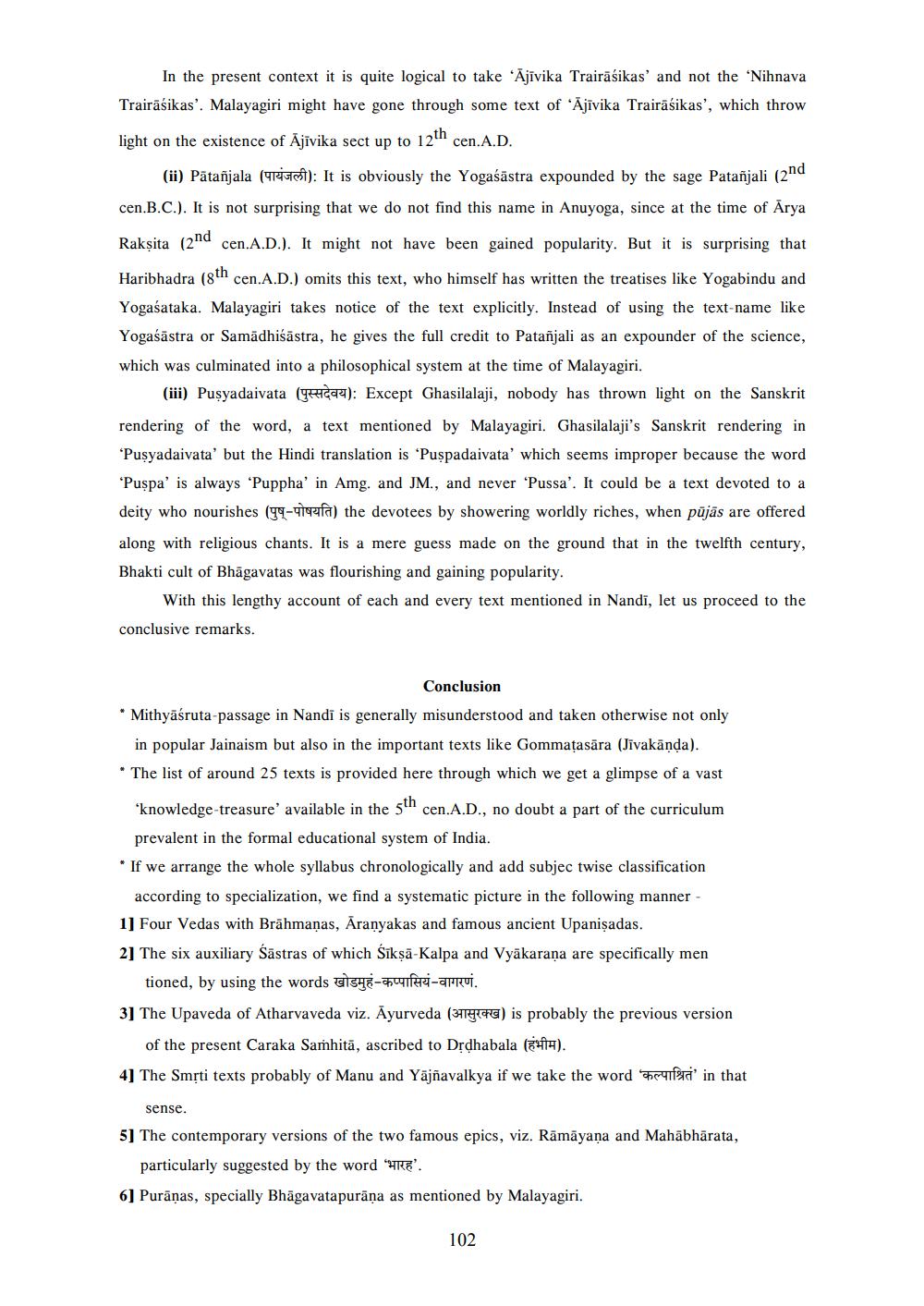________________
In the present context it is quite logical to take 'ājīvika Trairāśikas' and not the 'Nihnava Trairāśikas'. Malayagiri might have gone through some text of 'Ajīvika Trairāśikas', which throw
light on the existence of Ājivika sect up to 12th cen.A.D.
(ii) Pātañjala (4RIFA): It is obviously the Yogaśāstra expounded by the sage Patañjali (2nd cen.B.C.). It is not surprising that we do not find this name in Anuyoga, since at the time of Arya
Raksita (2nd cen.A.D.). It might not have been gained popularity. But it is surprising that Haribhadra (8th cen.A.D.) omits this text, who himself has written the treatises like Yogabindu and Yogaśataka. Malayagiri takes notice of the text explicitly. Instead of using the text-name like Yogaśāstra or Samadhiśāstra, he gives the full credit to Patañjali as an expounder of the science, which was culminated into a philosophical system at the time of Malayagiri.
(iii) Pusyadaivata (946): Except Ghasilalaji, nobody has thrown light on the Sanskrit rendering of the word, a text mentioned by Malayagiri. Ghasilalaji's Sanskrit rendering in *Pusyadaivata' but the Hindi translation is 'Puspadaivata' which seems improper because the word Puspa' is always 'Puppha' in Amg. and JM., and never 'Pussa'. It could be a text devoted to a deity who nourishes (99-4792fa) the devotees by showering worldly riches, when pūjās are offered along with religious chants. It is a mere guess made on the ground that in the twelfth century, Bhakti cult of Bhāgavatas was flourishing and gaining popularity.
With this lengthy account of each and every text mentioned in Nandi, let us proceed to the conclusive remarks.
Conclusion
* Mithyāśruta-passage in Nandi is generally misunderstood and taken otherwise not only
in popular Jainaism but also in the important texts like Gommațasāra (Jivakānda). * The list of around 25 texts is provided here through which we get a glimpse of a vast
*knowledge-treasure' available in the 5th cen.A.D., no doubt a part of the curriculum
prevalent in the formal educational system of India. * If we arrange the whole syllabus chronologically and add subjec twise classification
according to specialization, we find a systematic picture in the following manner - 1] Four Vedas with Brāhmaṇas, Aranyakas and famous ancient Upanişadas. 2] The six auxiliary śāstras of which Śikṣā-Kalpa and Vyākarana are specifically men
tioned, by using the words utsya- fri-arrui. 3] The Upaveda of Atharvaveda viz. Ayurveda (ryce) is probably the previous version
of the present Caraka Samhitā, ascribed to Drdhabala (E41h). 4] The Smrti texts probably of Manu and Yājñavalkya if we take the word c4frd in that
sense. 5] The contemporary versions of the two famous epics, viz. Rāmāyana and Mahābhārata,
particularly suggested by the word 'भारह'. 6] Purāņas, specially Bhāgavatapurāna as mentioned by Malayagiri.
102




